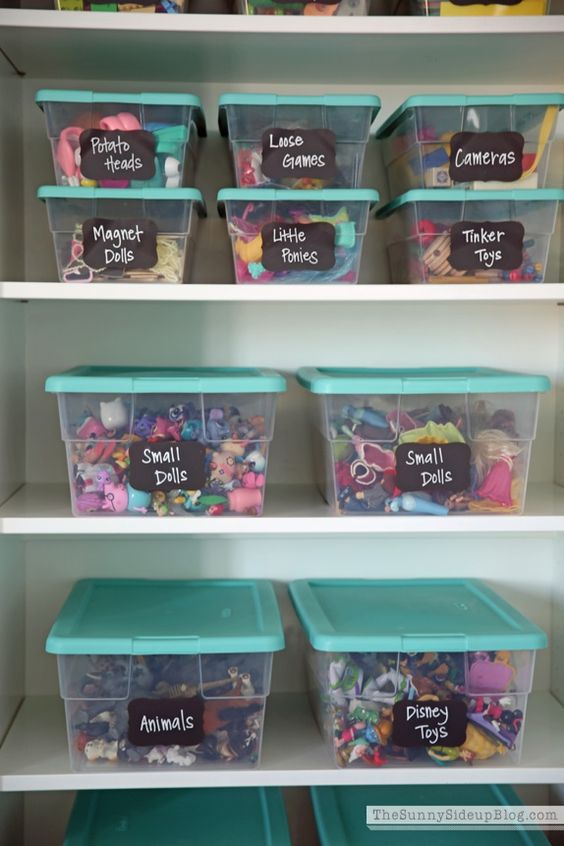Kids are so very interesting. From the time they are born, they come with so much stuff – from the crib and the stroller to the car seat and the infant swing, the play yard and walker, it’s endless. These tiny little bundles end up taking over our homes. Child paraphernalia quickly and permanently seems to inundate every room of the house; living room, bedroom, kitchen, bathroom and eventually the garage. It is fascinating that something so small can require so many things and so much real estate.
Over time your children grow and the accumulation of things grows with them. Kid clutter is in a category all its own. As parents, perhaps our one of the biggest organizational challenges we face is our children’s belongings. We want to save the memories, the firsts, legacy items, the list goes on and on. We worry that if we discard a toy, we are letting go of a piece of them. To exacerbate the clutter quotient there is the matter of allowing our kids to be kids and letting focus be on making memories instead of maintaining order.
So how do we manage the chaos of it all and strike a balance? Simple. We incorporate systems into our value system and give everything a “home”. Once we evaluate exactly what things we want our children to have, every one of those things should have a home; a designated place to be stored. Ideally, those things should be returned to their “home” after it is used in order to keep the clutter at bay. Here are some thoughts about children and organization that may help.

- Organize what you already have.
Toys. Having a storage space for each category of toy is key. Plastic bins will suffice but the options are limitless.
– Categorize the bins. This is very individual but a common approach may be for example “stuffed animals”, “sound toys”, “instruments”, “legos”, “dolls”, “trains”, “people”, etc… You can always add pictures to the bins for the younger kids that can’t read yet. It’s never too early to learn to organize.
– When news toys come in, if they do not fit in the bin, consider discarding some of the older or less used items. It’s always a good idea to regularly purge older toys or ones no longer being played with.
Books. Create a space that allows a child easy access. For smaller children, front facing storage allows them to see the covers of the books and the independence to choose on their own and store on their own from a very young age.
– Create a storage space in area where there is space for them to read as well to encourage the “library” to be self-contained.
Artwork. Most parents want to keep all the lovely artwork that our talented little ones create. While there are those that are so special that we do display them in our homes we still can’t display them all. The solution is easy. Make the art digital. Take pictures of the art and make a photo book. This way you will be able to actually enjoy the art as a coffee table book instead of it sitting in a bin in the closet or garage.
- Communicate your value system.
When it comes to birthdays and holidays, let your family know that you are trying to manage the amount of toys that your child gets, or that your child already has too many toys. If you have a minimalist approach for instance, communicate that and likely friends and family will respond in kind by asking what they need when they want to buy something. There are also numerous sites these days where family can donate to a child’s 529 college fund. Money put towards their education is much better spent than a toy that they’ll play with for only a few weeks.
- Share toys amongst friends.
Many toys are age specific and kids will grow out of a particular toy after a certain time. Talk with your friends who have kids about doing some sort of an exchange. Friends who have kids a couple of years older than yours will likely donate age-specific toys to you. Pay it forward by doing the same with other friends!
- Include them in clean up.
Help the kids be aware of what they have by getting them in the habit of cleaning up and organizing. Involve them in the process of deciding what should go where, and then come up with some rules about cleaning up. For example, taking away a toy that doesn’t get put away for a few days might be effective (and they might not even notice that it’s gone!).
- Reassess and donate.
Every few months, take stock of all the toys and determine what toys are being used the most and which ones are no longer played with. There are plenty of children’s consignment stores that will gladly accept clean and gently used toys, so get in the habit of making a donation from your stock when necessary. If your child is old enough, have that conversation with your child about donating, and involve your child in picking out and packing up the toys to give away.